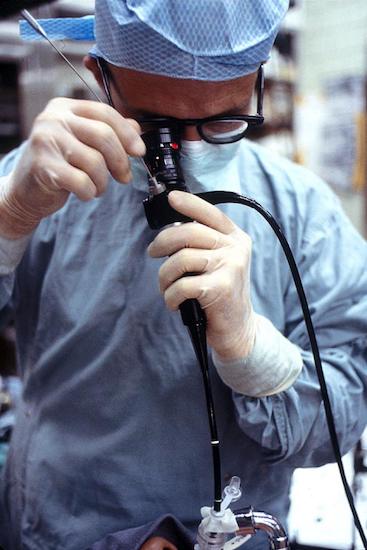Bronchoscopy is the use of a flexible or rigid tube to examine the airways. Bronchoscopy is used to detect and diagnose lung cancer. It is also used to remove airway blockages (i.e. food), to treat bleeding, to deliver radiation to cancerous areas (brachytherapy) and to take small tissue samples (biopsies). Flexible bronchscopies are used when possible because they offer a better view for the physician and are less uncomfortable for the patient. The patient does not need to be under general anesthesia. Rigid bronchoscopy requires that the patient be under general anesthesia.1 Newer methods utilize fluorescent imaging techniques to better visualize the tissues. Using blue light instead of white light allows the detection of early cancers.2

Bronchoscopies are often used in detection and diagnosis of lung and esophageal cancers, as early detection can be a key to survival. According to the Journal of Thoracic Disease, the 5-year survival rate of patients with late diagnosis is 17%, while those who got an early diagnosis had a 5-year survival rate of 70%. A bronchoscopy continues to be a highly useful tool for detection and diagnosis, as many new developments have been made in the technology. These include: narrow band imaging (NBI), autofluorescence bronchoscopy (AFB), and high magnification bronchovideoscopy (HMB), which bodes well for the future of cancer detection through bronchoscopy.3
- 1El-Bayoumi E, Silvestri GA. Bronchoscopy for the diagnosis and staging of lung cancer. Semin Respir Crit Care Med. 2008 Jun;29(3):261-70. [PUBMED]
- 2Divisi D, Di Tommaso S, De Vico A, Crisci R. Early diagnosis of lung cancer using a SAFE-3000 autofluorescence bronchoscopy. Interact Cardiovasc Thorac Surg. 2010 Sep 19. [Epub ahead of print] [PUBMED]
- 3Andolfi, Marco et al. “The Role of Bronchoscopy in the Diagnosis of Early Lung Cancer: A Review.” Journal of Thoracic Disease 8.11 (2016): 3329–3337. PMC. Web. 26 Jan. 2017.
